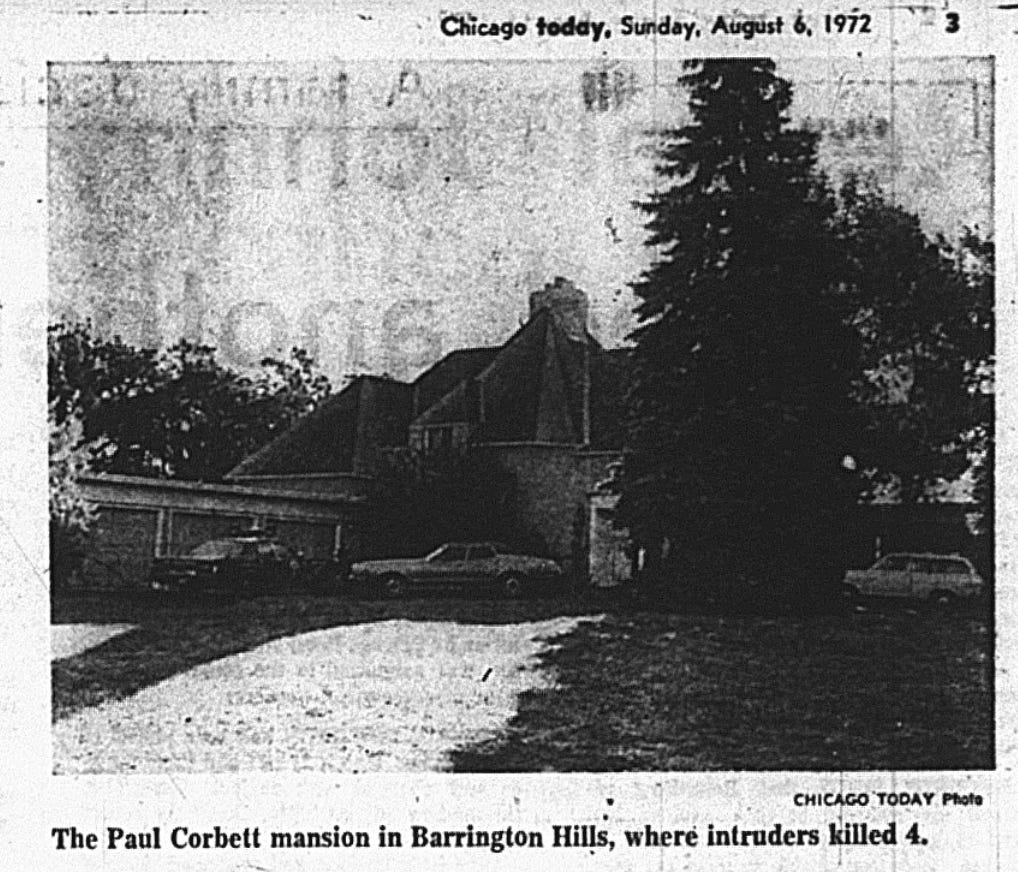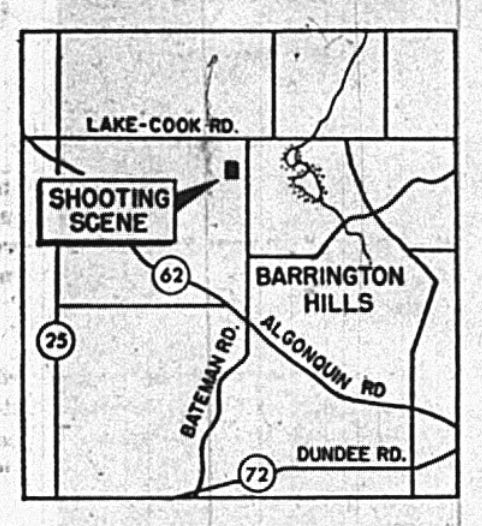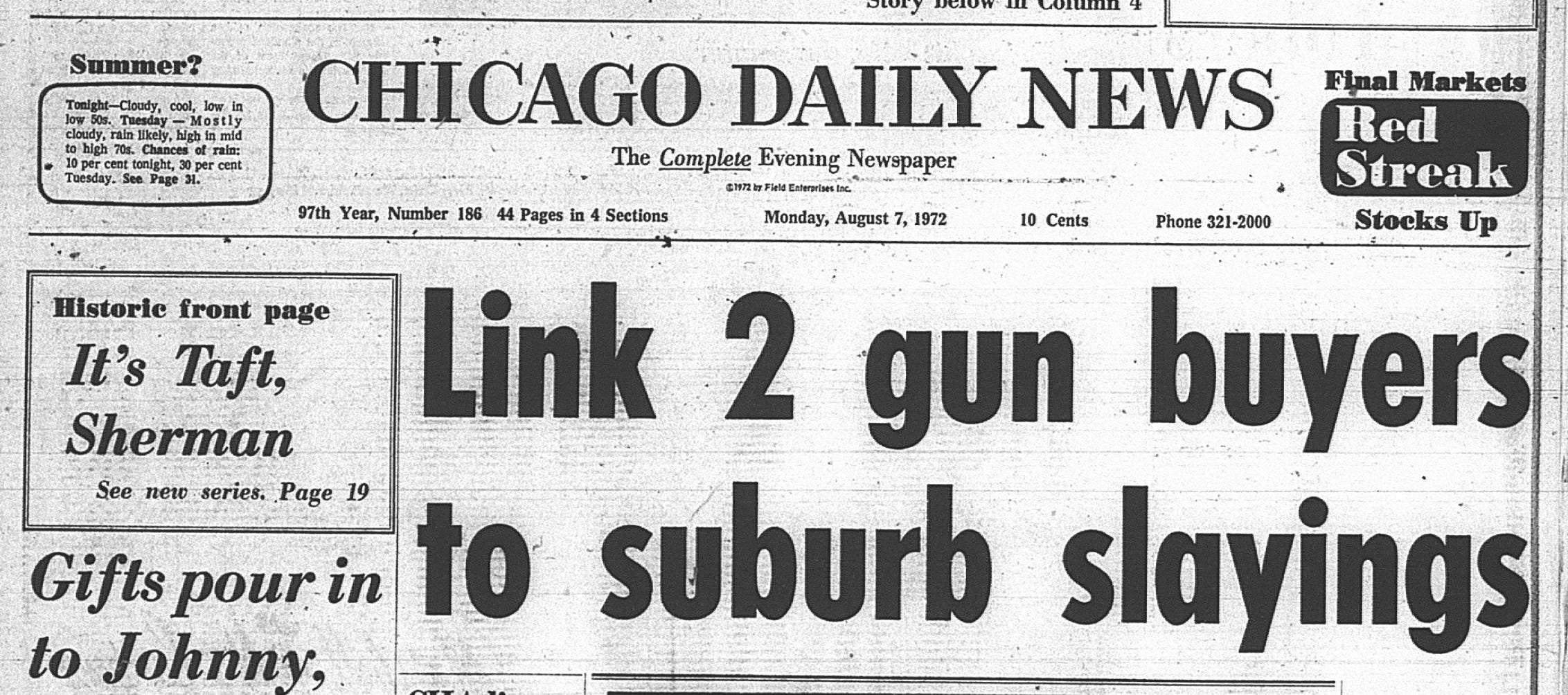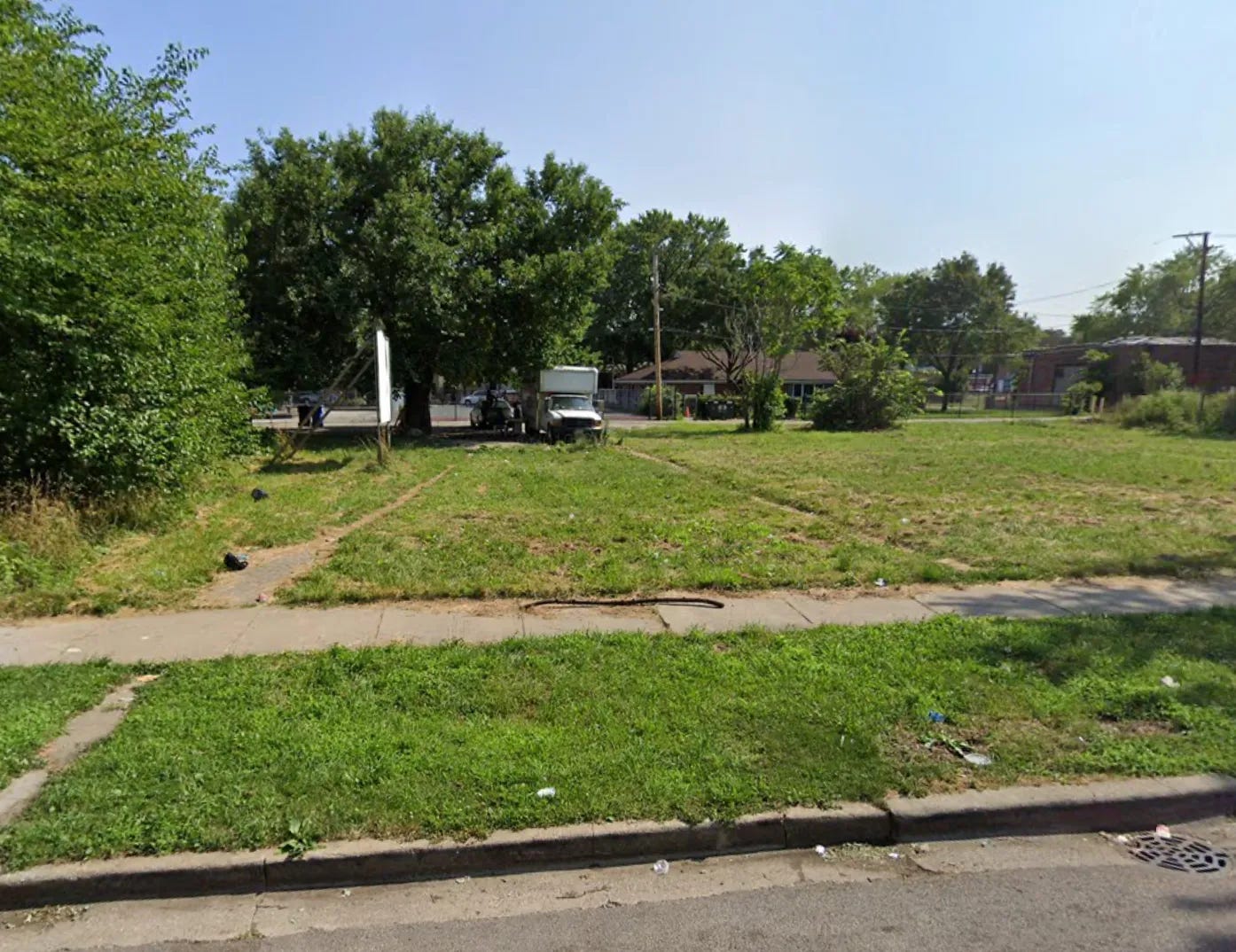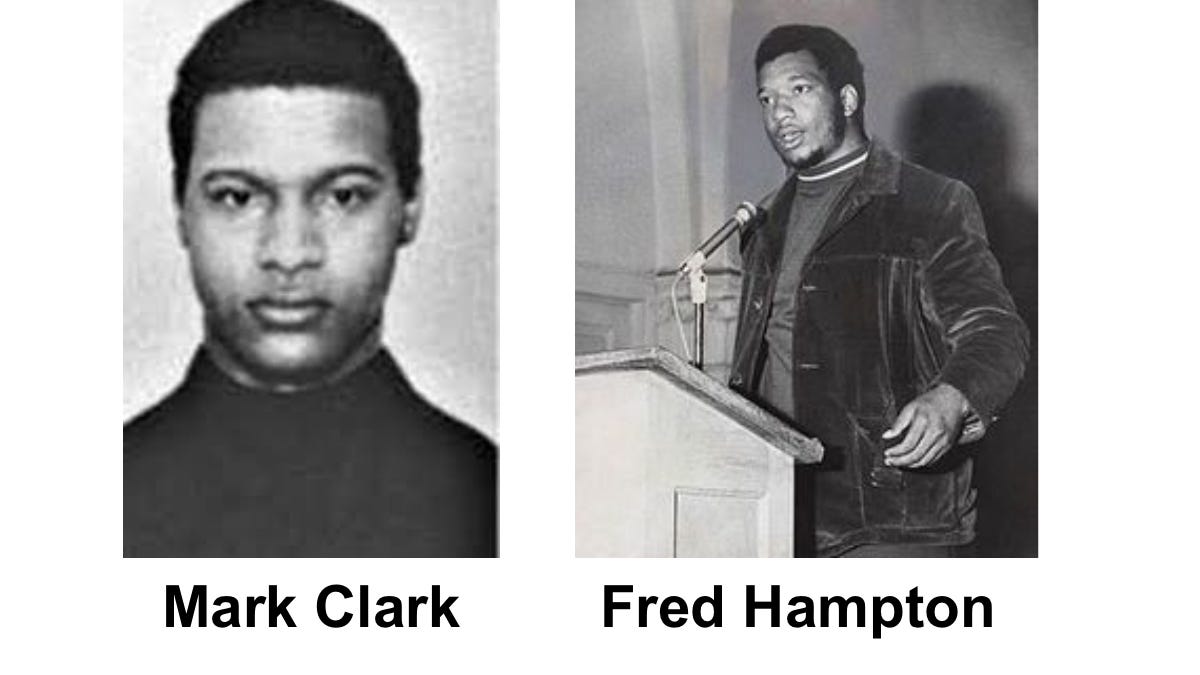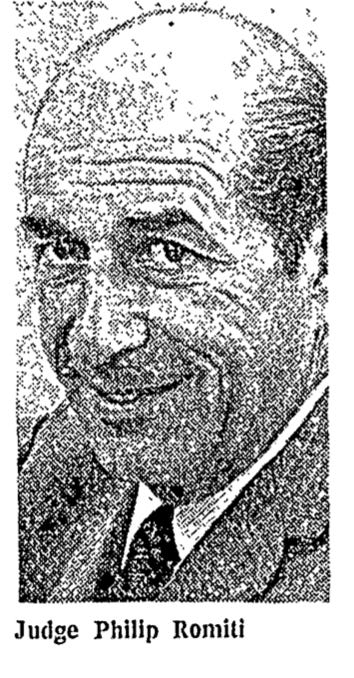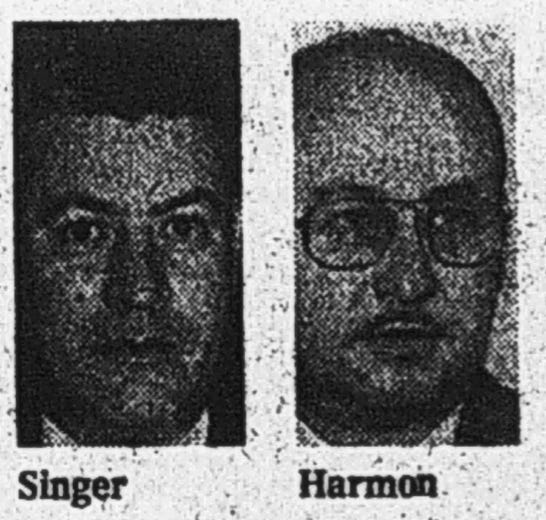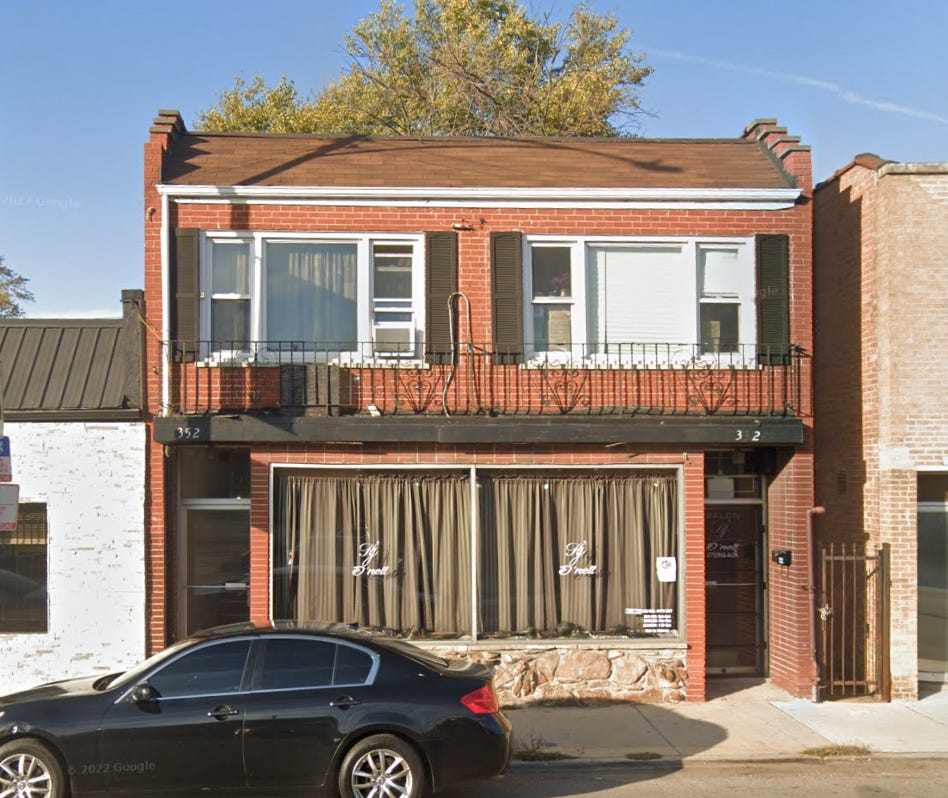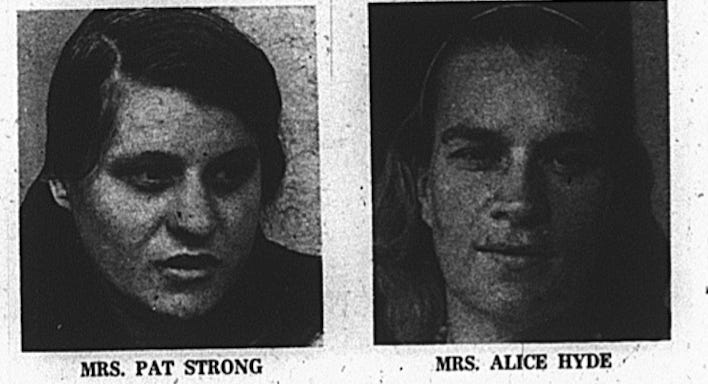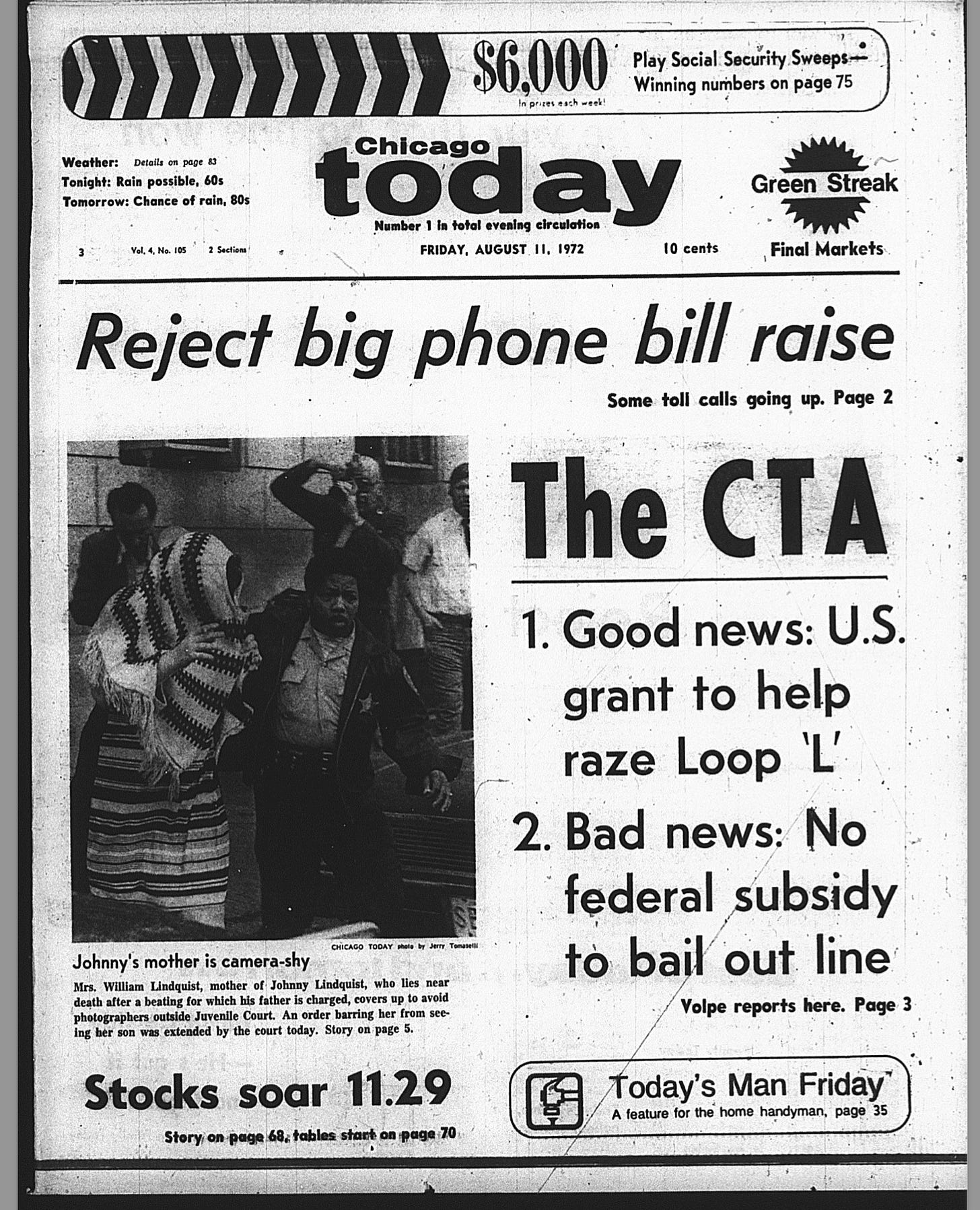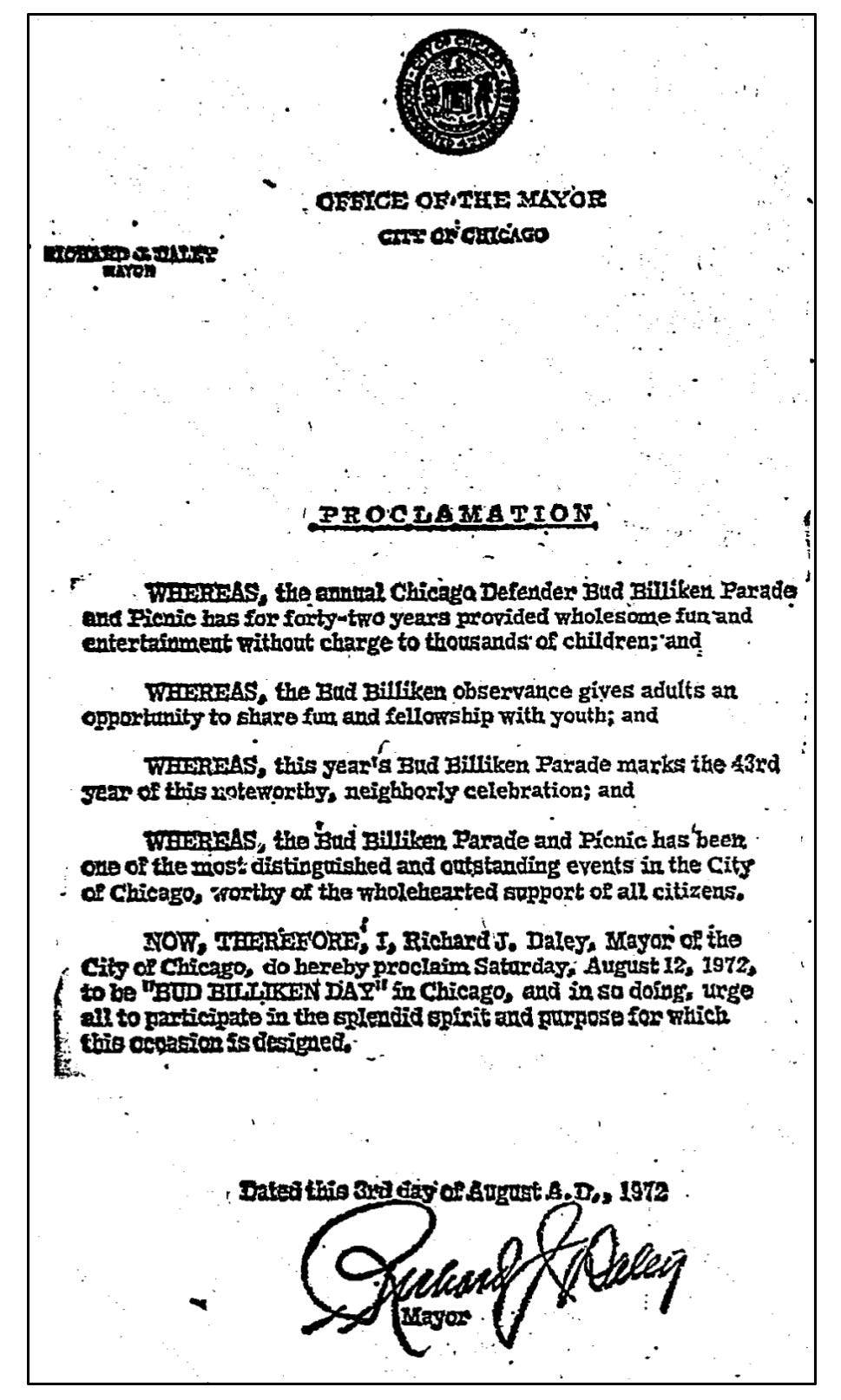To access all website contents, click HERE.
Why do we run this separate item peeking into newspapers from 1972? Because 1972 is part of the ancient times when everybody read a paper. Everybody, everybody, everybody. Even kids. So Steve Bertolucci, the 10-year-old hero of the novel serialized at this Substack, read the paper too—sometimes just to have something to do. These are some of the stories he read. Follow THIS CRAZY DAY on Twitter, @RoselandChi1972.
KIDNAPPED!
But first, we’re not done with last week’s mass murder.
August 7, 1972: Corbett murders
The stunning murder of four family members in wealthy, rural, peaceful Barrington Hills on Friday night stays smack on the major dailies’ front pages on Monday—except, strangely, Chicago Today.
Strange because William Randolph Hearst’s outrageous Front Page-era Chicago American begat the somewhat less outrageous Tribune-owned Chicago’s American which begat Chicago Today in 1969. (See Chapter Three Notes: Chicago Newspapers Circa 1972 for more.) Regular TCD1972 readers can’t fail to notice that Chicago Today normally maintains the tradition of making the news as fun and entertaining as possible.
Yet on Monday, the paper relegates the shocking bloody slaughter of a rich family to the bottom half of page three.
And the front page is a boring combination of headlines about a shortage of welfare agency staffing; a confusing ongoing tax dispute that has Cook County Assessor Parky Cullerton suing Illinois for cheating county schools out of tax money via “intentional, fraudulent and illegal computation of the state multiplier used in Cook County assessments”; and last, incredibly enough, is the lousy state foster care program that put six-year-old Johnny Lindquist in a vegetative coma right now. That’s the last and smallest headline, with Johnny’s name barely noticeable in the subhead.
Really, it’s like the Tribune and Today editors switched places today.
(Note: The Defender only covers murdered/missing/injured white people or children if a Black person is somehow directly involved, discussed further in last week’s first item on Johnny Lindquist and in the first coverage of the Corbett murders.)
Now to Monday’s installment of our current sensational murder. If you missed it last week and want to start at the beginning, see here for Saturday’s coverage, then scroll down for Sunday’s.
Recap: Retired insurance executive Paul Corbett, his wife, her adult daughter from a previous marriage, and Mrs. Corbett’s sister were “riddled” with bullets in the pantry of their 14-room mansion on a secluded, wooded 30-acre estate last Friday night. The Tribune picture below is from the back yard. The Sun-Times’ Mike Miner described the “gray brick house” as “set well back in a wooded lawn,” at the top of a steep hill.
“It is a tale straight from the annals of the Sharon Tate massacre,” intoned another atmosphere piece from the Aug. 5 Daily News by George Harmon and Edmund J. Rooney, which noted that the Corbett mansion had a patio “overlooking a small lake.” A Chicago Today piece said the house had a “bi-level” garage filled with six posh cars.
The crime scene “looked like a slaughterhouse” according to Barrington Hills Police Chief Ralph Hummel.
The victims were found about 9:45 p.m. by Mrs. Corbett’s son, who ran screaming from the house to find help. He told police the pantry was “flowing with blood.”
Police originally posited a break-in by at least two gunman because there were two types of bullets and casings, from a .25-caliber gun and a “.30 caliber carbine” which is referred to now as a “rifle.”
Over the weekend, it was unclear what may have been taken from the house. The upstairs was ransacked, but many obvious things of value were untouched, including the Corbett’s six luxury cars and three rifles.
The Sun-Times put veteran crime and mob reporter Art Petacque on this one.
Petacque reports police took fingerprints “from a blue, late-model Mercury Montego owned by [Mrs. Corbett’s sister] Mrs. Dorothy Derry”.
“The car was parked near the house, and under some bushes a few feet away investigators discovered the car keys, apparently thrown there by the murderers.”
Mrs. Corbett’s son told police that as he arrived that night, “he noticed that a door of Mrs. Derry’s auto was ajar and that the interior light, which goes on when the door is not closed, was shining.”
Petacque says police found the fingerprints don’t match the victims, their relatives or friends—but for several more day, other reports will say police aren’t done comparing prints.
“The Sun-Times learned that several relatives and friends of the victims voluntarily underwent lie detector tests in secret on Saturday. The tests showed that none was connected with the crime, investigators said.” (This morning’s Tribune also mentions the lie detector tests, but with no dramatic language.)
“The scene in the house indicated a methodical, cold-blooded assassination, an investigator said,” writes Petacque. The family had eaten dinner and were drinking tea “when the killers invaded the home….Police said they believe the intruders forced the Corbetts and Mrs. Derry to lie or kneel on the floor of a pantry next to the kitchen. Each was shot in the head with a .25-caliber automatic pistol….Corbett’s wound was in the top of his head, indicating he was kneeling when the shot was fired.”
Mrs. Corbett’s daughter, Barbara Boand, was eight feet away from the others. “She was cut down by a .30-caliber carbine. The bullet entered her left armpit and apparently pierced her heart.” This leads police to speculate that Boand tried to escape and was shot in the process.
Petacque says police “are uncertain” about the motive—did the killers come to rob the Corbetts, or was killing them the whole point?
The Tribune’s Philip Wattley reports that the motive hasn’t been determined, but “investigators ruled out robbery, since nothing is known to have been taken.”
“Some investigators lean to the theory that the killers entered the Corbett home intending to commit murder, but conceded that nothing that has been learned about the four dead persons so far to mark them as likely slaying victims.”
Police are tracking down local stolen and abandoned vehicles. “We’ve got a whole fleet of trucks we’re checking out,” says Chief Hummel, who’s always good for a quote.
“Reports of a truck seen and heard in the area the night of the murders led police to speculate the killers may have escaped from the scene in a truck.”
In other words, seeing or hearing a truck anywhere near the Corbett’s house was strange enough to remark upon.
Chicago Tribune: Affluent fear
The Tribune’s Charles Mount contradicts the narrative that every story since Saturday morning has hammered home—that Barrington Hills is quiet, peaceful, and normally insulated from the real world by its wealth and rural landscape.
Instead, ironically, “Barrington Hills residents run the risk of crime as part of the price they pay for their affluent homes and sprawling estates, officials and residents of the suburb said yesterday.”
“‘There are times when I go to the front door with a gun in my hand or with one nearby,’ said Fred Pollak, who lives on Bateman Circle in the suburb.” Mr. Pollak lives directly down the hill from the Corbett mansion.
“Thickly wooded areas in the suburb, rolling fields, a zoning minimum of five-acre properties, and large, multi-roomed mansions” mean that Barrington Hills is one of the wealthiest but least safe suburbs, says village board member and Public Safety Department head R.J. Grigsby.
“‘Everybody here has at least one dog,’ he said.”
“Burglar alarms, wired into the Barrington Hills Police Department, protect all of the homes in the suburb, where the median price of a home is more than $82,000.” That’s only $553,500 in 2022 money, oddly enough. Even the Corbett home is only valued at $100,000, which is $675,000 in 2022—not enough in 2022 money to indicate extreme wealth. For that, you can barely buy what were originally working-class homes in plenty of North Side neighborhoods these days. Yet the piece ends with this quote from Fred Pollak:
“People assume that we’re wealthy and that we keep a lot of money in the house. We’re scared.”
Off the top of my head: Everybody started watching “Lifestyles of the Rich and Famous” in 1984, and after that, even people barely maintaining upper middle-class status had to have what would come to be called “McMansions.” Athletes began earning truly obscene salaries, and started building estates for themselves in these outlying bucolic suburbs that all had to come equipped with both indoor and outdoor pools, indoor basketball courts that are mini stadiums, and the like.
So in the two decades immediately following 1972, Americans completely recalibrated what it meant to be rich, and to live well. In the Corbett’s day, it was enough to have a few more fancy cars than they could drive at one time, 14 rooms, no live-in servants, and homemade meatloaf on Friday night with the immediate family. But that’s just off top of my head.
The papers insist this is the wealthiest suburb in Chicagoland, and interestingly, they never give the Corbett’s street address—a bizarre anomaly in 1972, when newspapers include the numbered street addresses of children, crime witnesses, and even random people stopped on the street for a comment about, say, Leo Durocher getting fired by P.K. Wrigley. Every other murder location in 1972 is minutely detailed. But for the Corbetts, we only read that the house is “on Bateman Circle,” and see vague maps like the one above.
FWIW, in 2022 Zillow lists as “off market” a house on Bateman Circle that by its location and circular driveway looks like it could well be the Corbett home. Its “Zestimate” is $832,600. This is what it looks like from satellite, to give you a better idea of the wooded nature of Barrington Hills:
Monday moves on, and the evening papers take over.
“Two ‘suspicious’ young men tried to buy a .25 caliber pistol Friday afternoon in Woodstock, hours before the murders of four persons in Barrington Hills,” report Phillip J. O’Connor and John Gallagher for the Daily News.
Woodstock is about 15 miles away. Gun shop owner Richard Paine told the News that the two young men were “black, in their 20s and drove a dark green panel truck.” Was Paine just being racist? Probably not: Neither man had the required Illinois gun registration card, and they didn’t know that state and federal laws require a 72-hour waiting period between buying a gun and taking possession. Later in the week, Paine will mention in other accounts that the two men claimed to work in a nearby factory, but Paine knew that factory is closed.
Also, Paine said he was annoyed that one of the guys kept squeezing the gun’s trigger. Tomorrow, we’ll learn police have gotten prints from the gun.
“Police said the type of weapons used by the killers…were not the type usually used by professional killers, home invaders or burglars.” Hm. Who does that leave? Somebody they knew, presumably.
All the fingerprints are still being checked, and motive remains a mystery. “A large diamond ring was found on the body of Corbett’s wife…and other valuable jewelry and paintings” were left behind too.
Chicago Today’s Michael Hirsley brings a whole new angle:
“Alarm buttons hidden from view and activated at all times are part of the elaborate security system in the Barrington Hills home where four persons were slain, CHICAGO TODAY has learned,” he writes.
“Police remain puzzled today by the fact that none of the buttons was pushed Friday night”. The house’s overall burglar alarm was turned off, but Chief Hummel says the alarm buttons “are on 24 hours a day”. There are several buttons near the kitchen, he says, “and one right in the pantry” where the victims were killed.
Tomorrow’s Trib will more specifically say there are three buttons—one in the pantry, one on a table in the master bedroom, and one behind some drapes next to the front door. The Trib explains the buttons are about the size of a pack of cigarettes—an international unit of measurement in 1972, better recognized than inches or centimeters. In 2022 we would likely say “the size of an iPhone” to mean about the same thing.
At this point, police have determined that nothing at all was taken except about $100 from Mr. Corbett’s wallet. Maybe, they speculate, the killers were looking for something but didn’t know the house lay-out, because they only ransacked some rooms and passed up jewelry and other valuables as they went. A lockbox with “personal papers” in the basement went untouched, so police “believe the attacker may have been seeking specific documents”.
August 7, 1972: O’Shea case
Chicago Daily Defender
by Joe Ellis
On July 26, four Black youths broke into the home of the O’Shea’s at 9311 S. Throop, one of two white families left on their block in racially changing Brainerd. The youths savagely beat 12-year-old Joseph O’Shea, who was home alone, fracturing his jaw and putting him in a brief coma. They lit a sofa on fire and turned on the gas stove burners before leaving. Luckily, Mrs. O’Shea returned home before an explosion. (Note: Originally, we heard there were two home invaders, and it was a rug they lit on fire.)
Since then, the O’Shea’s Black neighbors have expressed their horror and sympathy, and sought to help by donating blood and money for medical expenses for Joseph and another area boy who was earlier assaulted by a local Black 12-year-old, Charles Whittenberg, who Joseph identified as one of the attackers.
Charles Whittenberg has been arrested and placed in the Audy Home. He’d been home on parole for “holding burning matches to the eyes of [7-year-old] William Vickers, of 9120 S. Loomis Av., after tying his hands to a basement door near his home,” per the Tribune, and was previously “on probation in 1969 for strong-arm robbery”.
Yes, you read the year and did the math in your head correctly. Authorities plan to give Charles Whittenberg some psychological tests, given that he robbed someone with a weapon by the tender age of nine.
Yesterday, the dailies that publish on Sundays reported police had just dropped charges against Charles Whittenberg. They’ve. arrested three older teenagers who confessed to the crime and led police to items stolen from the O’Shea home.
Today the Defender takes up the story:
“The family of 12-year-old Charles Whittenberg, 1113 W. 93d st., Sunday was still awaiting his release from the Audy Home after police Saturday charged five other youths for a crime the juvenile had falsely been accused of committing. His family also revealed receiving over 20 threatening telephone calls from whites in the wake of widespread publicity.”
Immediately after Joseph O’Shea’s brutal beating, writes Ellis, “police began a massive search for his assailants, rounding up dozen of black youths, including the Whittenberg boy, who was later identified by the beaten youth from a photograph.”
Whittenberg’s family said he was home watching television with a sister, but Ellis writes that police “had already discovered that the Whittenberg youth had previously been held for various offenses, and apparently concentrated upon him as their prime suspect.”
The Defender reports that Whittenberg still hasn't been released from the Audy Home, though.
A sister tells the Defender about the threatening phone calls. “One caller who telephoned twice, reportedly said, ‘Your brother is going to die.’”
“The investigators who arrested the new suspects are James Houtsma and Jerry Adams of the Burnside Robbery Unit, who said they never fully believed the Whittenberg boy was guilty. They continued searching for evidence in the case, and eventually turned up new results.
“Many black neighbors of the O’Shea family have contributed money for the victim’s medical expenses, and offered their sympathies and help, as well as donating blood.”
August 7, 1972
Chicago Daily Defender: Leo Durocher
Mercurial baseball legend and Cub manager Leo Durocher was fired by P.K. Wrigley on July 24, which rocked Chicago.
Today, Defender sports columnist Doc Young addresses Durocher’s successor, Whitey Lockman.
“Whitey Lockman—he was on second base when Bobby Thomson hit the Shot Heard Round The World,” said Steve when I asked if he remembered much about the guy who followed Leo Durocher. “That would make Lockman a New York Giant.”
What was the Shot Heard Round The World? It’s not a Chicago thing, but still.
The Giants had won 37 of their last 44 games to play the Dodgers for the 1951 National League Pennant, so they were a miracle team already when they reached the last of a three-game play-off. The Giants were trailing the Dodgers 4-2 with two runners on base, in the ninth inning, when Thomson came to bat and hit a homer into the stands to clinch the game and the pennant.
“Guy named Willie Mays was on deck,” Steve went on, because you can’t stop him when he gets started. “Guy named Leo Durocher was the Giants manager. Jackie Gleason had already puked in the stands. And that’s when the Giants were cheating. They had an electric system set up, the electrician was actually a Dodgers fan, and with a buzzer in the bullpen hooked up to the Giants clubhouse. Somebody in the clubhouse could see the opposing catcher’s signals. They’d use the buzzer to signal the bullpen, and then somebody in the bullpen would hold up a ball if it was a fastball, and toss the ball if it was a breaking pitch. They didn’t find out about it for a long time, like 50 years. Lockman probably hated Durocher by 1972.”
August 7, 1972: Lindquist case
Chicago Today
by Jeff Lyon
Chicago Today’s Jeff Lyon goes to the Lindquist apartment at 4729 W. Erie to ask Mrs. Irene Lindquist what happened to her six-year-old son Johnny, who “lies near death in a coma” at St. Anne’s Hospital after being beaten and tortured by his father, William, who’s in jail.
For the past week, Chicagoans have seen this innocent face on the front page of their newspapers. Every day. Every day since Chicago Today broke the story on August 1 of how Johnny Lindquist was sent directly to an orphanage at birth and then placed with a loving foster family, but then forced to return to his birth parents this past March—and what happened next.
Irene Lindquist told police that William Lindquist couldn’t understand why Johnny didn’t know them anymore, the Tribune reported on August 4. It “infuriated him to the point of beating Johnny with a metal-lined belt, Mrs. Lindquist said. Then it was fists, Mrs. Lindquist told police, then worse.
“Eventually, it was a plastic clothesline tied to Johnny’s wrists, hanging him over a door for up to nine hours, she told police. He wet his pants, his father argued, and must be punished, Mrs. Lindquist said.
“Last Friday night, it was too much for Johnny. He became hysterical—couldn’t stop crying, His father pulled him into the bathroom and hit him and kicked him, Mrs. Lindquist said.”
Irene Lindquist finally called police, she said, after she found Johnny unconscious. Now Johnny lies in a vegetative coma, his skull fractured, bruises covering his body. His heartbroken foster parents spend their days at his bedside.
“She was upstairs, the person with all the answers in the savage beating of her little boy. But 10 minutes of pounding her door would not move her to respond,” starts Jeff Lyon today.
“He was upstairs, the 6-year-old boy who told court authorities he didn’t want to be taken from his foster parents and returned to his natural mother and father. Locked inside his shattered skull are answers, too, but Johnny Lindquist lies near death in a coma in a hospital room.”
Doctors don’t expect him to live. “If he does, it would take a miracle to restore his brain function, the experts say.
“Answers mean little.
“Still it seemed right to try and talk with Mrs. Irene Lindquist last night in her home at 4729 W. Erie St. She has to have something to say….
“Curtains rustled, an eye peeked out, but there was no answer. A neighbor said, ‘She won’t come out, won’t open her door.’
“In stark irony, a small child’s tricycle was in front of her door.”
August 7, 1972: Hanramania
Chicago Daily News
We took a break last week from the trial of Cook County State’s Attorney Edward Hanrahan and 13 co-defendants for conspiracy to obstruct the investigation into the 1969 predawn police raid of a West Side Black Panther apartment, in which Panthers Fred Hampton and Mark Clark were shot to death.
It’s a bench trial. Judge Philip Romiti spent last week overseeing a voire dire hearing into newly uncovered statements from survivors of the raid given to their attorney in the weeks just after the raid. Are the statements genuine? The statements contradict what some survivors said in grand jury testimony, and also contradict their contention that no one in the apartment shot at the police. An FBI investigation determined that the Panthers fired one shot, and the police fired over 80 time.
Per the newly discovered statements, apartment survivors had five guns during the raid and fired at least three shots. Defense attorneys for Hanrahan et al say this means that the original indictment was based on perjured testimony, and the charges should be tossed.
Today the headline news is that the trial will go on.
“After reading thousands of pages of evidence over the weekend, Romiti held that the defense motion for dismissal was premature, and could not be made by the defense until the state concluded its case.”
Romiti also said it would take much more evidence to decide if any of the grand jury witnesses committed perjury.
Special prosecutor Barnabas Sears isn’t willing to toss in the towel either. Sears “countered that possible perjury by the Panther survivors is not an issue, since Hanrahan and the others were indicted on a charge of conspiring to obstruct justice in the investigations that followed the raid.”
Romiti is considering whether to grant the defense request to strike testimony from apartment survivor Deborah Johnson, identified as Fred Hampton’s common-law wife and mother of his son born one month after the raid, because they don’t have Johnson’s full 1969 statement. Only a portion of the last page of Johnson’s statement turned up with the other newly-discovered affidavits. Johnson’s current attorney, James Montgomery, has the full statement—but Johnson won’t let him give it to the court under attorney-client privilege.
August 8, 1972: Hanramania
Chicago Tribune
by Jerry Crimmens
by Kingsley Wood
The Sun-Times adds that Judge Romiti hasn’t ruled on the authenticity of the newly-discovered statements, either. Their authenticity “has not been resolved primarily because the lawyers representing the survivors refused to testify about details of the statements, contending such testimony violated rights of the attorney-client relationship.”
The Tribune’s Jerry Crimmins clarifies that Judge Romiti has ruled that Deborah Johnson’s statement, which alone is sealed and still secret, is protected by lawyer-client privilege.
So Monday the trial resumes where it left off, with survivor Deborah Johnson, who has already testified she was asleep with Fred Hampton in the apartment’s south bedroom when the raid happened.
Under questioning by defense attorney Thomas P. Sullivan, Johnson “testified that it was her practice to keep weapons by her bed…and that on several occasions she had kept loaded weapons by her bed as she slept,” writes the Sun-Times’ Kingsley Wood.
The Trib’s Crimmens covers more Johnson testimony.
Sullivan: At the time you left the bedroom, do you know whether Fred Hampton had been shot?
Johnson: I don’t know definitely. I assumed he had been.
Sullivan: Did you see any blood on Fred Hampton?
Johnson: Not that I remember.
Sullivan: Why did you assume he was shot?
Johnson: He was lying in the bed and he didn’t move to get out when we were coming out. I just assumed he was dead, or shot, or something.
“She testified…she did not remember seeing anyone fire into the bedroom…She also testified that Hampton had not consumed any alcohol or sleeping pills the night before the raid.”
“Asked if it has been a Black Panther practice to assign guards to remain awake while others slept, she said it was.”
Sullivan: Was it the practice [of Panther guards] to have weapons?
Johnson: Yes.
Sullivan: Was it the practice to keep these weapons loaded?
Johnson: Yes.
Sullivan: Who was assigned as guards the night of Dec. 3, 1969?
Johnson: Mark Clark and Louis Trulock.
August 8, 1972
Chicago Tribune: Vantage cigarette full page ad
This ad has been running almost daily in all the papers, except I think the Defender, for weeks now. Vantage has definitely decided, go big or go home.
Money quote: “Well, yes, I could have stopped smoking altogether, only I wouldn’t stop smoking even for one day.”
You may remember an earlier version of this Vantage strategy from March 20, in another full page of type headlined “To the 56,000,000 people who smoke cigarettes.” In that prototype, Vantage spoke directly to smokers, giving them the ultimate rationalization: “But there is one overriding fact that transcends whether you or shouldn’t smoke, and that fact is that you do smoke.”
Now, with this ad—which, it bears mentioning again, has been running in every major daily, nearly every day, for weeks now—Vantage harnesses the far more powerful first person voice.
August 8, 1972
Chicago Daily Defender: Jackson Five
August 8, 1972
Chicago Sun-Times: Goldblatt’s
Goldblatt’s runs so many full-page ads and two-page spreads in literally every daily newspaper all the time—several two-page spreads in a row is not uncommon—that you sometimes wonder why the Goldblatt family didn’t just start their own newspaper.
This is an unusual small ad from Goldblatt’s that caught my eye because by 2022, awnings are practically like buggy whips. In 1972, awnings were everywhere. They are one of those quiet but ubiquitous pieces of everyday life that demanded and got no particular attention, and nobody remarked when they began to disappear.
My guess is that people stopped putting awnings on their houses in tandem with the ramping up of air conditioning. In 1972, many people still had no AC at all, or they might splurge and get one window unit to put in a single central window. Once AC became nearly universal, it wasn’t imperative to take every possible step to prevent the house from heating up in the first place. Why spend money on awnings?
Another guess: With people beginning to take global warming seriously, awnings may make a comeback.
August 8, 1972: O’Shea case
Chicago Daily Defender
by Tony Griggs
“The father of Lindsey Smith, Jr., 17, arrested Friday for the critical beating of a 12-year-old white boy, said his son was beaten by police shortly after the arrest and denied medical treatment for the resulting wounds.”
Mr. Smith told the Defender “he learned of his son’s detention not by police but through a neighbor’s son.” Smith said he didn’t see his son until after he’d been in police custody for about 24 hours.
“The father of 11 children, the elder Smith said when he reached the Gresham District station Saturday, police were uncooperative and demanded his identification. ‘They didn’t want to talk to me,’ he said. ‘They were very indignant.’”
Mr. Smith claims his son had a swollen red left eye, and said he was dizzy and had blurred vision from being beaten “by Burnside Robbery investigators James Houtsma and Jerry Adams….The elder Smith said his son reported being forced against his will to sign a statement of confession to the crime. The youth was denied medical treatment or a chance to telephone his parents, Smith said.”
“All of the accused youths are students at Calumet High School. The younger Smith has been arrested previously for burglary and in connection with a murder, his father said, although the charges were dropped in both cases.”
So, did investigators James Houtsma and Jerry Adams doggedly keep investigating the O’Shea beating after arresting 12-year-old Charles Whittenberg, because they didn’t really think such a young kid could commit the crime—until they came up with the true culprits? That’s the narrative in all the accounts outside this story, including the Defender’s coverage.
Or did Houtsma and Adams hurriedly arrest a 12-year-old, realize the charges wouldn’t stick, and then railroad three older youths into confessions by roughing them up?
Well, you might wonder why police put Charles Whittenberg in the Audy Home for the O’Shea beating to begin with, if the main investigators didn’t think he did it. But Whittenberg did have quite a dire record already, and Joseph O’Shea identified him from pictures.
And we have nothing else to go on.
There will be no more articles in any of the papers, at least according to digital archives, on the teens arrested for the O’Shea assault. The Defender’s digital archives aren’t always complete, but if there was any continuing coverage, you would expect to find something there—or in the Tribune or Daily News.
On the other hand, we all know three Black teens not from prominent families in 1972 could easily have gone to jail with no further publicity, particularly if the Defender chose to drop the story, rightly or wrongly.
What we do know: Unless it’s a complete police fabrication, the three teens led the cops to items taken from the O’Shea home. A fourth teen will be apprehended soon—Charles Hill of 9341 S. Racine—who had been in police custody for a probation violation, but under a different name. Police will say Hill’s fingerprints police were in the O’Shea home.
The other dailies all reported yesterday and today that the first three arrested teenagers appeared in court for Joseph O’Shea’s beating, charged with attempted murder, aggravated battery, armed robbery and arson. They’re each held on $100,000 bond, with a preliminary hearing is set for August 29.
August 8, 1972: Corbett murders
Chicago Daily News
by Phillip J. O’Connor
I like to use the original ledes, but today’s are all unusually longwinded. Nobody gets straight to the chilling point, which is this:
The night the Corbetts were slaughtered, someone called their house and talked to Paul Corbett when he probably had a gun to his head.
“The man who may have been the last person to talk to Barrington Hills executive Paul Corbett before he and three other persons were murdered, said Tuesday Corbett was ‘very upset,’” starts the Daily News account.
“Daniel Palenske, 27, of 137 Burton, Cary, told The Daily News ‘I talked to him about 7:25 p.m. Friday on the telephone. He kept yelling at me. He acted strangely. He was very abrupt with me.’
“Investigators said Corbett’s unusually abrupt manner may have been a disguised attempt to call for help as the killers held guns on Corbett and the other persons in the house.”
Palenske went to Northwestern Military Academy in the early 1960s with Anthony Boand, Mrs. Corbett’s son from her first marriage. It was Anthony Boand who arrived at the Corbett home about an hour after the murder, and found his family in a pool of blood.
A part-time landscaper, Palenske had walked the estate late that afternoon with Mrs. Corbett to discuss tree trimming. She asked him to call back later that night to talk with Mr. Corbett. But Palenske had previously planned to drop by for that pruning discussion two days earlier, on Wednesday. He tells police that on the phone Friday night, Paul Corbett was “irked” by the delay.
Palenske and Paul Corbett talked for about ten minutes, and as they hung up, Palenske promised to trim the trees on Sunday.
The articles do not, but I can’t help but dwell on those two points. Palenske talked to Paul Corbett for about ten minutes about tree pruning as Corbett and his family had guns trained on them by home invaders. And then Corbett made a date to get his trees pruned on Sunday, though he sounded very upset.
“Two crack Cook County sheriff’s detectives, both of whom have solved major murder cases, are directing the investigation,” the Daily News account concludes.
“They are Lt. Jerry Harmon, 48, who is in command, and Sgt. Bernard Singer, 50, acting commander of the detective unit at the sheriff’s Milwaukee Av. station in Niles.
“‘When a tragedy like this happens, I certainly don’t like to be placed in the limelight. If an investigator likes the bright lights, he will fall flat on his face,’ Harmon said.
“Harmon played a key role in solving the 1967 Thankgiving Day sex slaying of 17-year-old Cheryl Lyn Littlejohn. He spent nearly two years trying to unravel the mystery.”
That is a Chicago History Rabbit Hole we will return to when we can.
Chicago Today
by Jeff Lyon
“Police hopes for a break in the slayings of four members of the Paul Corbett family sank today when Barrington Hills Police Chief Ralph L. Hummel disclosed that there were ‘some indications the killer wore glove.’”
Still, police dusted the entire “murder house” and are hoping some prints will lead to something.
Meanwhile, a fifth dinner plate was found in the Corbett dishwasher, leading to speculation that a fifth person had been there—and murdered the hosts.
But then Hummel throws cold water on that theory, too.
“‘The fifth dinner guest doesn’t look plausible,’ Hummel said. ‘They ate meatloaf and the only extra piece of dinnerware we found could very likely have been a platter. There was no extra silverware.’”
What about the two Black men who tried to buy a .25 caliber gun in nearby Woodstock that afternoon? Hummel points out that they were not successful in purchasing the gun.
Chief Hummel admits that he’s “scraping the bottom of the barrel” for clues.
So now, investigators are rethinking the idea that the Corbetts must have known their killers, since they were known to not answer the door without checking to see who it was, and there was no sign of forced entry. Now police are thinking that maybe the back door had been left unlocked, and the killers entered that way.
And maybe the invaders didn’t plan to kill the Corbetts, but ended up shooting Barbara Boand because she started to bolt out of the pantry, while the others were willing to kneel or lie there during the robbery.
Before, the police said the attackers didn’t seem professional, and the pantry was riddled with bullets. Now, an unnamed police official says: “Another thing indicating these may have been professional thieves is their accuracy with the weapons. They were very accurate and did not waste bullets. They knew how to shoot. All were shot in the back of the head.”
Did you know “Roseland, Chicago: 1972” is a website built around the serialize story of Steve Bertolucci, a 10-year-old Roselander in 1972?
Start Steve’s story here.
August 8, 1972: Lindquist case
Chicago Today
by Howard Marks and Milton Hansen
The real headline is our first look at Chicago’s current number one villain, William Lindquist. Straight out of central casting, he could have played Charles Manson if he had the acting chops.
But the story doesn’t focus on the creepiness of William Lindquist’s mugshots.
“Official documents revealing that Johnny Lindquist was taken from his foster home without a court order have been obtained by CHICAGO TODAY,” write Howard Marks and Milton Hansen.
“All court files in the Lindquist case were impounded on the authority of Juvenile Court Supervising Judge William Sylvester White the day this newspaper printed Johnny’s story.” Chicago Today, you may recall, broke the Johnny Lindquist story.
“The papers, which include a transcript of the final hearing held by Judge Thomas Rosenberg were obtained exclusively only after a reporter pointed out to court officials that state law allows the news media to examine certain files.”
Do they mean FOIA? The Freedom of Information Act took effect in 1967, so the idea of governments being obligated to share records is still somewhat new.
The transcript shows, Marks and Hansen report, that during the last court session re Johnny’s custody on Feb. 25, the Illinois Department of Children and Family Services (DCFS) told Judge Rosenberg that Johnny’s natural father wanted him returned. DCFS asked for a four- to five-month continuance to work out a plan to send Johnny back to the Lindquists, even though he was happily living on a farm in Wisconsin with his foster family.
Rosenberg granted the continuance. But rather than crafting a plan for moving Johnny back to the Lindquists, DCFS simply ordered Johnny back to his natural parents by March 28. DCFS put a Catholic Charities social worker on Johnny’s case. That social worker wrote a letter in May claiming “Our reports show that the judge is pleased with the interest the Lindquists are taking in reestablishing a relationship with their son.”
But Judge Rosenberg denies he heard anything about Johnny Lindquist after he granted the continuance.
“I made no recommendation to return the child. In Juvenile Court that recommendation is never made by the judge, but by a caseworker and which the judge either approves, or disapproves. I never talked to anyone after Feb. 25 with reference to this case,” Judge Rosenberg told Chicago Today. “I’ll take any kind of lie tests on this.”
Supervising Judge White defends the DCFS action: “They don’t have to notify the judge [about their intention to move a child]. What they did was not illegal.”
Today reports that an opinion from the Illinois Attorney General says DCFS can move children without a court order, while the Cook County State’s Attorney says they can’t.
And an anonymous court official tells Today that “The Court also asked [DCFS] to supply all social and psychiatric histories in this case,” but the documents were never turned over to Judge Rosenberg.
“Then, for some yet unknown reason, [DCFS] decided to return Johnny to the fearful beating that could cost his life.”
August 9, 1972
Chicago Daily Defender: letters
This first letter is interesting due to some Defender history, but mostly I just like to hear people reminisce about the old days, wherever they’re from.
August 9, 1972: Hanramania
Chicago Tribune
Chicago Today
by Jerry Crimmens
by Michael Garrett
“A tenth occupant in the Black Panther apartment raided by state’s attorney’s police Dec. 4, 1969 is believed to have fled thru an escape hatch planned for Fred Hampton,” starts Today’s account of Tuesday’s trial proceedings.
Raid survivor Deborah Johnson, sometimes identified as Fred Hampton’s common-law wife, was asleep with Hampton in the apartment’s south bedroom when the raid started. In a third day on the stand, Johnson told defense attorney John Coghlan “that Hampton had practiced using an air vent in the living room to reach the basement. From there he could walk thru a large break in the west wall into the basement of the adjoining apartment.”
“Miss Johnson also admitted that a man identified only as Mead was in the apartment when she went to bed early Dec. 4. Mead is believed to have escaped during the raid and taken with him a .32 caliber pistol for which live and spent ammunition was later recovered in the apartment.”
Coghlan, per the Trib’s Crimmens, “asserted that someone escaped” through the vent, which he explains “once led to a heating duct.” Johnson initially said she didn’t know if the vent was an escape hatch, but admitted she’d seen Hampton use it, and that he told other Panthers about it.
“I don’t think that either side contends anybody escaped from that apartment,” Special Prosecutor Barnabas Sears interrupted.
“‘Mr. Sears, I contend somebody escaped,’ said Coghlan. ‘There were nine unaccounted-for .32 caliber shell casings in that apartment. Your inventory doesn’t have a gun to match them.’”
Romiti allowed defense attorney Thomas P. Sullivan to read from Black Panther newspapers and pamphlets “only as it relates to the conduct of the police officers at the time of the raid and immediately after the raid,” writes Crimmens.
“Sullivan then read a quotation from a Panther pamphlet which said, in part, ‘…when you kill all the pigs [policemen], you get complete satisfaction.’
“‘Did you hear that from Fred Hampton?’ he asked Miss Johnson.
“‘Yes,’ she answered.”
August 9, 1972
Chicago Daily News: TV guide jackpot contest
Hilaria Weber won $10,150 in the Daily News’ jackpot contest, which involves matching a unique number from your Daily News TV guide with the week’s winning jackpot number. Kind of a boring contest, so I hadn’t gotten around to including it yet.
But today the TV Jackpot is so important, the Daily News runs it above the masthead—and even above the headline for the sensational Corbett murders in Barrington Hills, a killing so heinous it was called, just two days ago, a “slaughterhouse” and “the worst mass murder in the Chicago area since eight student nurses were slain on the city’s South Side in 1967 by Richard F. Speck.”
Granted, $10,150 is almost $70,000 in 2022 money.
Mrs. Weber just retired as a saleslady in Marshall Field’s linen department. She took the winning TV Guide from her weekend Daily News with her to mass at Holy Name Cathedral on Sunday to keep it safe until she could claim her prize. She is officially adorable.
If you’re a regular THIS CRAZY DAY reader, you’ll probably want to follow Mike Royko 50 Years Ago Today too.
August 9, 1972: Corbett murders
Chicago Daily News
by Dennis Sodomka
“Barrington Hills Police Chief Ralph Hummel says he believes investigators are close to a ‘breakthrough’ in the case of four members of a family who were shot to death in the suburb Friday night.
“Although he would not reveal the nature of the breakthrough, Hummel said it appeared that ‘bloodthirsty goons looking for a fast buck’ murdered retired insurance executive Paul Corbett, his wife, stepdaughter and sister-in-law.
“‘I can’t figure it any other way,’ Hummel said. ‘Some goons probably thought the house was easy pickings, that there would be a lot of money lying around.
“‘They probably panicked and slaughtered them all.’”
Police are still looking for those two guys who tried to buy a .25 caliber gun in nearby Woodstock the day of the murder, and trying to find a match for fingerprints inside the house and on Dorothy Derry’s car.
And now it turns out there are similar murders in both New Jersey and Petoskey, Michigan.
Chicago Today
by Jeff Lyon
The “new leads” sound weak.
The Corbetts liked to throw parties. They didn't use an employment agency like other rich people staff their party, “but instead were hiring bartenders, maids, and cooks in a ‘non-package’ way, according to police.”
Barbara Boand liked to ride horses at area stables. A police source “mentioned the stables and explained that stable workers are often vagabonds.”
Mr. and Mr. Corbett were “golfing addicts” at the posh Barrington Country Club. Not clear how that’s even a lead at all.
Meanwhile, Edward Dobbs, chief of Cook County sheriff’s police, says they’re convinced the killers were strangers, despite the lack of forced entry and the fact that nobody pushed one of the handy panic buttons.
“‘It appears to be the work of a home invasion crew,’ Dobbs said. ‘How many there were we can’t discern right now, but we are pretty sure they were strangers to the victim. If you had a weapon pointed at you at close range you wouldn’t have pushed the alarm buttons either.’”
Good point, though it’s the complete opposite viewpoint expressed by police until now.
That’s all we’ll hear about the Corbetts this week.
But it’s not the last of this case.
Oh no. Not at all.
August 10, 1972
Chicago Sun-Times: Kidnapped!
by Walter Lowe, Jr.
Chicago Daily Defender
This pleasant well-kept brick house at 8730 S. Union is, improbably enough, the place where South Side businessman Charles Moore was kept tied up and blindfolded overnight after he was abducted from the parking lot across the street from the offices of Charles Moore Construction & Realty Co. at 352 E. 87th St.
The Sun-Times and Defender report today that the whole thing happened a week ago. Authorities asked the press to keep it quiet as they hunted the kidnappers.
Three men pulled a gun on Moore as he walked to his car after work, forced him into his own car, then gagged, blindfolded and bound him and made him lie on the car floor as they drove off.
They stopped at a payphone to make Moore call his wife and say he’d be home late. Then he was held overnight somewhere. He heard both male and female voices, but because of his blindfold, never saw anyone.
On Friday, the kidnappers made Moore call his office and tell his secretary to write a check for $15,000 to his wife. Next, the kidnappers had Moore call his wife and tell her to pick up the check and cash it at their bank, Independence Bank of Chicago, at 7936 S. Cottage Grove, asking for small bills.
It didn’t occur to the kidnappers, apparently, that the bank might find that request a bit suspicious. After bank officials asked Mrs. Moore to step into an office to discuss it, she immediately spilled the beans.
Bingo, the bank called the police and FBI, who found nothing after “combing the area”. So they had Mrs. Moore make the required drop—putting the money in a brown paper bag and leaving it at the corner of 81st and Ingleside.
For Younger Readers: Brown paper bags used to be a ubiquitous household item, along with countless stray rubber bands.
Mrs. Moore left the brown paper bag with $15,000 in small bills at 81st and Ingleside.

A guy walking his dog found the bag of money. He “turned it into the FBI”.
Accounts don’t explain whether that means an FBI agent jumped out from behind some evergreen bushes and threw the poor guy up against a wall before realizing he was just a neighbor walking a dog…or whether a random person walking their dog who discovered a bag full of money would actually go to the nearest phone and call the FBI.
Meanwhile, Moore made a daring escape from the pleasant brick house on Union.
“He told police he had been left guarded by one man, and that when the man left the room for a few moments he was able to push his blindfold down by rubbing his head on a wall, enabling him to see a book of matches. Lighting the matches behind his back, he burned the ropes from his wrists, removed the gag from his mouth and fled through a rear entrance.”
If everything else hadn’t apparently checked out, I would think he made that up.
Moore escaped and brought police back to the pleasant brick house on Union, where they arrested Terrance Brown, 22.
The police were still seeking three accomplices when this story came out. They found two by the end of the week—James Nevels, 21, of 7343 S. Phillips, and Brenda Cole, 20, of 7640 S. Essex.
August 10, 1972
Chicago Daily News: Lucky Numbers jackpot
The Daily News continues hyping the TV News Lucky Numbers jackpot.
August 10, 1972
Chicago Sun-Times: Full page CTA ad
As Chicago Today reported on Aug. 8, “An enthusiastic reception is expected for the first contingent of the Chicago Transit Authority’s new air-conditioned buses at ceremonies at 10 a.m. Friday in the Civic Center Plaza.
“After the introduction, the 50-passenger, eight-cylinder vehicles, which cost $41,764 each, will be assigned to the Archer Avenue route.”
By November, there’ll be a fleet of 525 air conditioned buses for a total cost of $21,926,604. That’s almost $150 million in 2022 money. And worth every penny, I’m sure anybody who remembers buses without AC will agree.
And in August 2022, the CTA will get $3.4 million in federal grants from the Bipartisan Infrastructure Law to buy 10 electric buses. The CTA already has 20 electric buses, and it’ rather a big city, so it’s not exactly a game-changer.
August 10, 1972
Chicago Daily Defender: Blimp ride
Last week, the Defender named the contest winners who will reign as King and Queen of the 43rd annual Bud Billiken parade this coming Saturday:
We also learned that in addition to prizes and. sitting on a throne at the parade to greet the throng, the new royalty would get a ride in the Goodyear blimp “America.” Here they are, before their ride!
August 10, 1972: Lindquist case
Chicago Today
by Pat Krochmal and Milton Hansen
“Little Johnny Lindquist was beaten not only by his father, but also his mother, CHICAGO TODAY has learned.”
Today reporters Pat Krochmal and Milton Hansen go to the two-apartment house at 4729 W. Erie where Johnny Lindquist’s family had just moved on the day he was beaten into a coma by his father last week. There, they talk exclusively on the front porch with Mrs. Pat Strong and Mrs. Alice Hyde, William Lindquist’s sisters. Mrs. Strong lives in the downstairs flat, while the Lindquists had just moved in upstairs. They are not on a good terms with their sister-in-law.
Alice Hyde says Irene Lindquist used a metal-studded belt to beat Johnny. Hyde says she was with the Lindquists all day on July 28, helping move the family into the apartment.
“Jimmy [William Lindquist’s nickname] was working hard that day and had maybe three quarts of beer while they were moving,” Hyde tells Today. “But I know Johnny was already black and blue from beatings he had gotten from Irene earlier. I never saw Jimmy raise a hand to those children. It was always Irene.”
While the reporters were there, Irene Lindquist reportedly let the other children outside to play for the first time since Johnny’s beating. The reporters give candy and gum to the kids—Jane Ann, 8; Jimmy, 5; Joseph, 3; and Julie, 2—and they run off to play, but not before posing for this happy group shot.
“Jimmy later returned crying. He told his aunt that some children had told him, ‘Daddy killed Johnny.’ Mrs. Strong comforted the child and told him that the neighbor boy was just being cruel.
“‘Irene has a violent temper,’ Mrs. Hyde said. ‘She is 5 foot 5 and weighs 240 pounds.’”
Neither of the aunts explain why they never intervened in Johnny’s mistreatment, even though Hyde says she saw the marks on Johnny’s wrists where he was tied up and hung over a door upside down.
“Irene said he used to swing himself when he was hung up like that—as if he enjoyed it,” Hyde tells the reporters. “Jimmy told me when I visited him in jail last Tuesday that on the day of the beating Johnny kept banging his head against the dresser and saying that he wanted to go back to Wisconsin.”
The reporters also speak to Judge Rosenberg.
If there had been another hearing after the continuance he ordered on Johnny’s case, Judge Rosenberg says, “I would have asked Johnny to be there. I would have asked why the foster parents weren’t there. I would have taken Johnny into my chambers and talked to him about baseball and then asked him if he really wanted to go back to his parents.”
Instead, DCFS took Johnny from his loving foster home and sent Johnny straight back to the Lindquist household. Another article mentions that Johnny’s foster parents, who spend their days at his bedside, brought Johnny his favorite GI Joe toy, and laid it on the pillow beside him. The foster parents still had the GI Joe because DCFS wouldn’t let Johnny take his favorite toy when they took him away.
In the days to come, readers will hear in all the papers about the cards and well wishes sent to Johnny in the hospital; learn about the young nurses who care for Johnny 24/7, talking to him about his foster home in Wisconsin and holding him even though he’s in a coma, just in case he can still hear; and read anguished letters from Chicagoans who don’t understand why the legal system treats children like the property of natural parents.
Meanwhile, Patrick T. Murphy of the Legal Aid Society will announce that he’ll file suit with Juvenile Court Supervising Judge William Sylvester White for new guidelines that would require DCFS to get court approval to move children—after a hearing in which the judge would receive social and psychiatric histories of the children and families. Murphy wants the foster parents to appear in court too.
“Next, the court would be required to appoint a lawyer to represent the interests of the child,” say Murphy. “The lawyer also would be notified each time the child was moved and could make his own investigation.”
Hm. That Patrick T. Murphy sounds like a comer.
And Sen. Philip J. Rock (D., Chicago) has opened an investigation into the Illinois juvenile code with an eye toward legislation to prevent future Johnny Lindquist cases.
August 11, 1972
Chicago Today: Loop L
And everybody thinks that’s a good idea.
August 11, 1972
Chicago Sun-Times: Super Fly,, Blacula, Shaft, The Man
August 12, 1972: Bud Billiken
Chicago Sun-Times
“Bud Billiken, patron saint of all children, especially those of the South Side, returned Saturday in the spirit of the parade that passed in his honor along King Drive in muggy heat,” writes the Sun-Times’ Jacqueline Thomas.
The Defender has created such a civic phenomena in the Bud Billiken parade, the other papers are forced to ignore their normal protocol in which they won’t even name each other—and even cover the parade as a news story.
“It was the 43d annual Bud Billiken parade, sponsored by Chicago Defender Charities Inc., and founded by the first publisher of the Chicago Daily Defender, the late Robert S. Abbot.
“Abbot imported to the South Side the Billiken, mythical oriental protector of children, who ‘typifies things as they ought to be.’….Bud was Abbott’s nickname.”
Chicago Tribune
by Ronald Yates
The Sun-Times notes all the politicians on the reviewing stand and floats—everyone from Cook County Board President George Dunne to U.S. Rep. Roman Pucinski, and candidates including Republican Bernard Carey, running against incumbent Democratic Cook County State’s Attorney Edward Hanrahan, and Democratic gubernatorial candidate Dan Walker.
The Tribune thinks the politicians took over the parade, “as officeholders of both races turned out to turn on the black vote.”
The Sun-Times reports what we can all intuit must be true, though: The crowd’s real attention went to the entertainment and sports stars.
“Richard Roundtree, star of the movie ‘Super Fly,’ drew cheers from young and old, as did Bulls’ basketball star Bob Love, and Ernie Banks, Billy Williams and Ferguson Jenkins of the Cubs.”
“The floats, bands, drill teams and convertibles were launched at 35th and King Drive and passed slowly southward to Washington Park, where a massive picnic was held,” writes the Sun-Times.
Chicago police estimated over 500,000 people crowded the parade route, but over 600 cops “had little to do besides watch the parade,” per the Sun-Times. “According to one patrolman, their biggest job was taking care of lost children.” Lost children were sent to the Washington Park field house, where “their biggest concern seemed to be the fun that they were missing outside.”
August 12, 1972
Chicago Sun-Times: Patrick T. Murphy letter
Patrick T. Murphy, the enterprising lawyer with the Legal Aid Society who is promoting specific, common sense fixes for the state’s abysmal foster child system, writes to the Sun-Times about the Johnny Lindquist case.
August 12-13, 1972
Chicago Daily News: Detloff letters
Edward Detloff—and Helen Detloff, who I’ll assume is his wife—are both frequent letter writers to the Daily News. Edward especially. Perhaps at some point we’ll do a post of Detloff letters. Here’s another Chicagoan reminiscing about the past in Bronzeville.
August 12-13, 1972: Bud Billiken
Chicago Daily Defender
The Defender can’t cover its own 43rd annual Bud Billiken parade on Saturday in their weekend edition due to deadlines. Instead, the issue is stuffed with Billiken-related items, like this proclamation from Mayor Daley, on page 3:
So many ads too.
August 13, 1972: Hanramania
Chicago Today
by Michael Garrett
Today’s Garrett wraps up the week in Hanramania:
“After four weeks of [Cook County State’s Attorney Edward Hanrahan’s] trial before Criminal Court Judge Philip Romiti, it now appears that the case has taken the road that leads to acquittal, and soon.
“Altho the special prosecutor, Barnabas F. Sears seems determined to complete his case [perhaps another eight weeks], the defense has made damaging inroads to the evidence presented against it.
“‘The end appears inevitable,’ said one defense attorney.
“‘It is pre-ordained,’ said another.”
Surprisingly, Garrett doesn’t mention that’s just what you’d expect the defense lawyers to say.
There are three signs of possible acquittal, according to Garret.
The discovery of statements made by the survivors of the 1969 predawn police raid on the Black Panther apartment, made just after the raid, which contradict testimony to the grand jury that indicted Hanrahan and his 13 codefendants.
Survivor Deborah Johnson’s admission to defense attorney Thomas P. Sullivan that “in the weeks before the raid Hampton had preached police hate, in which he said: ‘From here on out it’s an eye for an eye, a head for a head, and a life for a life. If you kill a few pigs [police] you get a little satisfaction; if you kill more you get more satisfaction, and when you kill them all you get complete satisfaction.’ Miss Johnson admitted she heard Hampton say this.
“Sullivan summed up his cross-examination of Miss Johnson by saying it showed the philosophy, attitude and intent of the Black Panthers toward the police.”
Survivor Deborah Johnson’s admission that another Panther known as Meade was in the apartment that night when she went to bed, and there was an air vent in the living room that Hampton had practiced using as an escape hatch, and told the other Panthers about. Defense attorney John Coghlan claimed Meade was a “10th occupant” of the apartment and escaped with a .32 caliber revolver, because nine expended .32 caliber cartridges were found in the apartment but no matching weapon.
August 13, 1972
Chicago Sun-Times: White Sox
Did you dig spending time in 1972? If you came to THIS CRAZY DAY IN 1972 from social media, you may not know it’s part of the novel being serialized here, one chapter per month: “Roseland, Chicago: 1972” —FREE. It’s the story of Steve Bertolucci, 10-year-old Roselander in 1972, and what becomes of him. Check it out here.













